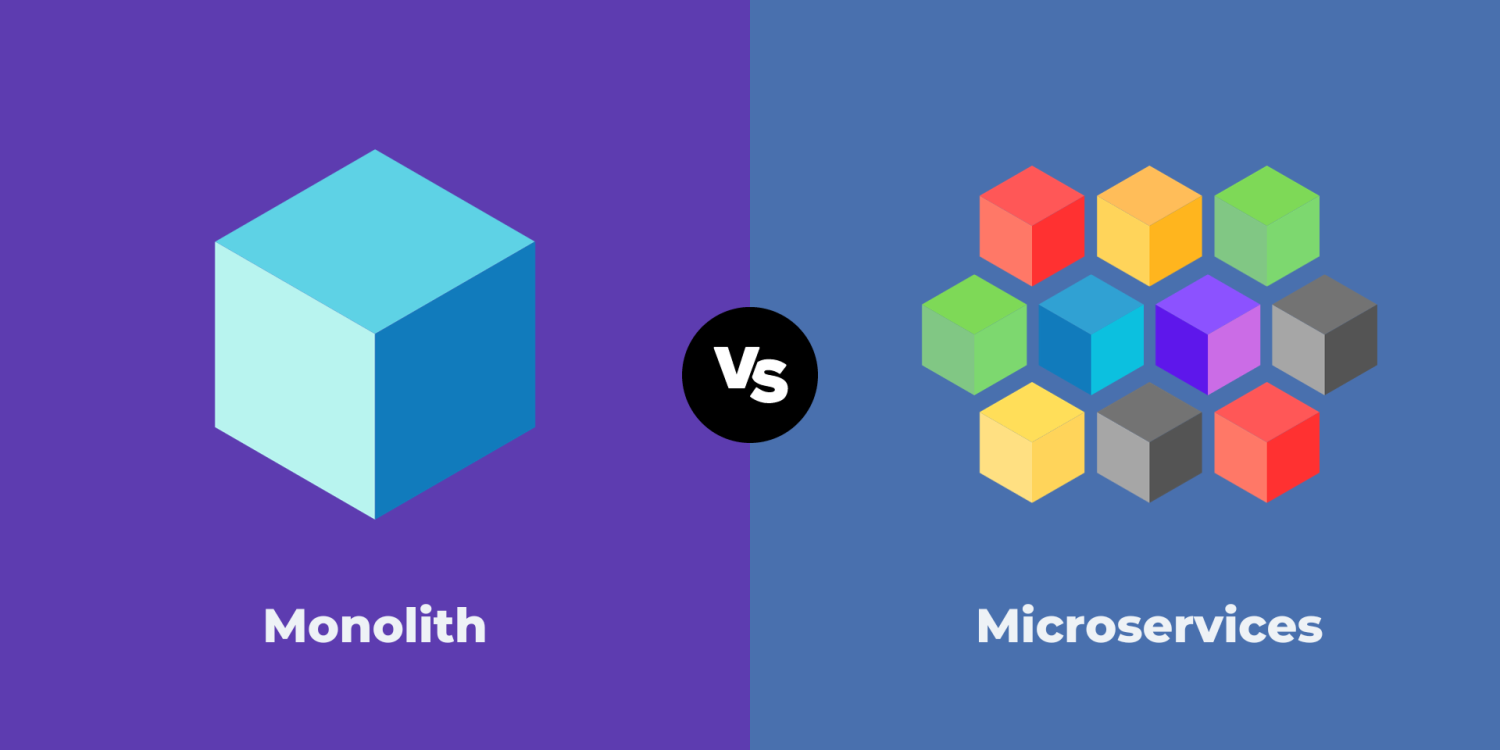Rethinking Software Architecture
 Ahmad W Khan
Ahmad W Khan
Software architecture is not just about choosing a structure for your application; it's about creating a foundation that aligns with your project’s goals, your team’s capabilities, and your organization’s resources. Yet, the industry often reduces this nuanced decision-making process into a binary choice: monoliths versus microservices.
Microservices are widely marketed as the future, the architectural holy grail that promises scalability, team autonomy, and technological flexibility. Meanwhile, monoliths are often dismissed as outdated systems, relics of a less sophisticated time. This oversimplification leads to architectural decisions driven by trends rather than context, resulting in systems that are unnecessarily complex or poorly suited for their intended purpose.
In this post, we’ll take a deep dive into both monolithic and microservices architectures. By understanding their strengths, weaknesses, and real-world implications, you can make informed decisions that prioritize practical outcomes over hype.
Understanding Monolithic Architectures
A monolithic architecture consolidates all the functionality of an application into a single codebase. This includes the user interface, business logic, and data access layers. While the term "monolith" often carries negative connotations, it’s essential to separate the architecture itself from poor design practices that sometimes accompany it.
Why Monoliths Work Well
Monolithic systems are simple by design, which makes them a practical choice for many projects, particularly those in their early stages. Here’s why:
Centralized Simplicity
A monolith's single codebase simplifies development, deployment, and debugging. All components are interconnected, eliminating the need for inter-service communication protocols.Lower Infrastructure Costs
Monoliths do not require the complex infrastructure often associated with microservices, such as service discovery tools, API gateways, or orchestration platforms. This reduces both monetary costs and the time spent on maintenance.Faster Development Cycles
With everything in one place, developers can implement changes quickly, without the overhead of managing multiple repositories or service integrations.Ease of Testing and Debugging
Testing a monolithic application is straightforward because you can run the entire system locally. Debugging is less complex because you don’t need to trace issues across distributed systems.
Challenges of Monoliths
Despite their advantages, monoliths are not without challenges:
Scalability
Monoliths scale as a whole, meaning you can’t allocate resources to specific components independently. If one part of the system requires more processing power, the entire application must scale.Coupling and Complexity Over Time
Without careful design, monoliths can evolve into tightly coupled systems, making them difficult to understand and modify. This is often referred to as the "big ball of mud."Team Collaboration
For larger teams, working on a shared codebase can lead to conflicts, especially if clear boundaries between components aren’t established.
The Modern Monolith
The issues associated with traditional monoliths are not intrinsic to the architecture itself. They are often the result of poor design or lack of discipline in maintaining boundaries between components. Modern development practices have transformed the monolith into a viable and powerful architectural style.
Characteristics of a Modular Monolith
A modular monolith is a monolithic system designed with clear separations of concerns and modularity. Here are its key characteristics:
Bounded Contexts
Inspired by Domain-Driven Design (DDD), modular monoliths divide business logic into distinct domains or modules. Each module operates independently within its context, reducing interdependencies.Loose Coupling with Clear Interfaces
Modules communicate through well-defined interfaces, minimizing the risk of cross-module entanglement.Scalable with Modern Tools
Tools like Docker and Kubernetes enable monoliths to scale horizontally, addressing one of the primary criticisms of traditional monoliths.Incremental Evolution
Modular monoliths can evolve into distributed systems over time. When a specific module becomes a bottleneck, it can be extracted into an independent service without disrupting the rest of the system.
Microservices
Microservices architecture decomposes an application into small, independently deployable services. Each service is responsible for a specific piece of functionality and often operates with its own database and tech stack.
Advantages of Microservices
Independent Scalability
Services can scale individually, allowing teams to allocate resources precisely where they’re needed. For example, a search service experiencing heavy traffic can scale without affecting the rest of the system.Team Autonomy
Microservices enable teams to own specific services, reducing bottlenecks and promoting parallel development. This independence is especially valuable in organizations with large development teams.Technology Diversity
Teams can choose the most suitable tools or languages for each service, creating a polyglot architecture that maximizes efficiency and innovation.Resilience
The failure of one service doesn’t necessarily bring down the entire system. For example, if the recommendation service goes offline, the rest of the application can continue to function.
Challenges of Microservices
Microservices are not a silver bullet. They come with significant trade-offs:
Operational Complexity
Managing a microservices architecture requires sophisticated infrastructure, including:Service Discovery: Tools like Consul or Eureka to locate and route requests to the correct services.
Orchestration: Platforms like Kubernetes to manage deployments and scaling.
Monitoring and Logging: Systems like Prometheus and Grafana to track service health and performance.
Distributed Tracing: Tools like Jaeger or OpenTelemetry to debug issues across multiple services.
Data Management
Maintaining data consistency across services is challenging. Distributed transactions are complex and often avoided, leading to eventual consistency models that can introduce subtle bugs.Latency and Debugging
Communication between services introduces latency. Debugging issues that span multiple services requires specialized skills and tools.Increased Costs
Each service requires its own deployment pipeline, monitoring, and infrastructure. These costs can add up quickly, especially for small teams.
Choosing the Right Architecture
There is no universally "correct" architecture. The choice between monoliths and microservices depends on your project’s context, including its scale, team size, and long-term goals.
A Pragmatic Framework for Decision-Making
Start Simple
For most projects, starting with a monolith is the simplest and most effective approach. It allows you to focus on building features and delivering value without the overhead of managing a distributed system.Modularize from the Beginning
Design your monolith with modularity in mind. This will make it easier to extract services later if the need arises.Evaluate the Complexity of Your Domain
If your application has naturally decoupled components or requires independent scaling, microservices may be appropriate.Consider Your Team Size
Small teams benefit from the simplicity of a monolith. Larger teams working on distinct parts of the system may find microservices more effective.Assess Your Budget
Microservices require significant investment in infrastructure and expertise. Ensure you have the resources to support this complexity.
A Balanced Approach
The future of software architecture isn’t about choosing between monoliths and microservices—it’s about blending their strengths.
Start with a Monolith
Begin with a modular monolith to keep development simple and cost-effective. Focus on delivering value and validating your product.Adopt Microservices Gradually
As specific parts of your system require independent scaling or specialization, extract them into microservices. This approach, often called the "strangler pattern," allows you to evolve your architecture incrementally.Invest in Observability
Use tools for logging, monitoring, and distributed tracing to maintain visibility into your system. Observability is critical for both monoliths and microservices.
Final Thoughts
Software architecture isn’t about following trends. It’s about making thoughtful decisions that align with your project’s needs and constraints. Both monoliths and microservices are valuable tools, but their effectiveness depends on how and when they’re applied.
By focusing on simplicity, modularity, and context-driven evolution, you can build systems that are scalable, maintainable, and aligned with your goals. Whether you choose a monolith, microservices, or a hybrid approach, the key is to let the problem—not the trend—drive the solution.
Subscribe to my newsletter
Read articles from Ahmad W Khan directly inside your inbox. Subscribe to the newsletter, and don't miss out.
Written by
